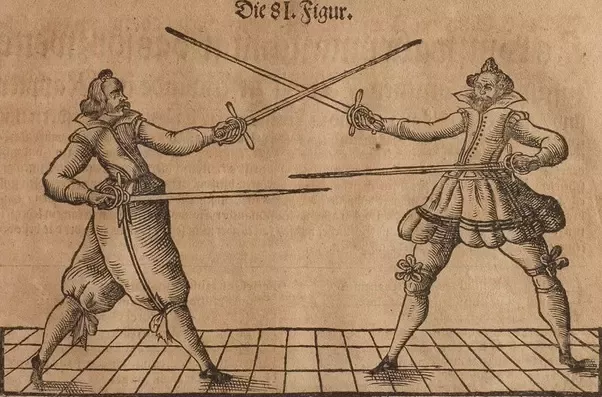Dual wielding fencing, a style that involves wielding two swords at once, has a rich and fascinating history that spans centuries. From ancient civilizations to modern-day competitions, this unique technique has evolved over time, influenced by the cultures and martial traditions of various societies.
Ancient Origins (3000 BC – 500 AD)
The earliest recorded evidence of dual wielding fencing dates back to ancient Mesopotamia, where warriors used two daggers or short swords in close combat. The Sumerians, Babylonians, and Assyrians all employed this technique, which was seen as a symbol of
strength and courage.
In ancient Greece and Rome, dual wielding fencing was also practiced by warriors and gladiators. The Greek hero Heracles (Hercules) was known to wield two swords in his famous twelve labors. Similarly, Roman legionnaires used two swords in battle, with one hand holding a short sword or dagger while the other held a longer sword or spear.
Medieval Europe (500 – 1500 AD)
During the Middle Ages, dual wielding fencing continued to be practiced by knights and nobles in Europe. The use of two swords became a status symbol, with wealthy warriors displaying their wealth and prestige through elaborate dueling rituals.
In Japan, the samurai class emerged during this period, and dual wielding fencing became an integral part of their martial art. However, the Japanese used two curved swords (katana and wakizashi) in close combat, employing techniques such as disengaging from
opponents and using misdirection to gain the upper hand.
Renaissance and 18th Century Europe (1500 – 1800 AD)
During the Renaissance, dual wielding fencing experienced a resurgence in popularity among European martial artists. The development of modern fencing styles, particularly foil and epee, led to the creation of new techniques and strategies for wielding two swords at once.
In the 18th century, Italian fencers developed the “sciabola” style, which involved wielding two short swords with one hand holding a shorter sword (such as a cutlass) while the other held a longer sword or rapier. This style was popularized by the famous fencing master, Achille Marozzo.
Modern Era (1800 – present)
In the 19th century, dual wielding fencing experienced another resurgence in popularity among European martial artists. The development of modern fencing styles led to the creation of new techniques and strategies for wielding two swords at once.
Today, dual wielding fencing is practiced by various martial arts schools and enthusiasts around the world. From historical reenactments to modern-day competitions, this ancient technique continues to captivate audiences and inspire new generations of practitioners.
Notable Figures and Their Dual Wielding Fencing Styles
Throughout history, several notable figures have been associated with dual wielding fencing:
- Heracles (Hercules): The Greek hero wielded two swords in his famous twelve labors.
- Samurai: Japanese warriors employed two curved swords (katana and wakizashi) in close combat.
- Medieval Knights: European nobles and knights used dual wielding as a status symbol during dueling rituals.
- Achille Marozzo: The Italian fencing master popularized the “sciabola” style, which involved wielding two short swords.
Legacy and Cultural Significance
Dual wielding fencing has had a lasting impact on popular culture, influencing literature (e.g., Alexandre Dumas’ “The Three Musketeers”), film (e.g., Errol Flynn’s swashbuckling adventures), and even music. The technique has also been immortalized in art, with countless paintings, sculptures, and other works depicting warriors wielding two swords at once.
Conclusion
Dual wielding fencing, a style that involves wielding two swords at once, has evolved over centuries, influenced by the cultures and martial traditions of various societies. From ancient Mesopotamia to modern-day competitions, this unique technique continues
to captivate audiences and inspire new generations of practitioners. As a testament to human ingenuity and creativity, dual wielding fencing remains a powerful symbol of strength, courage, and determination.

Leave a Reply